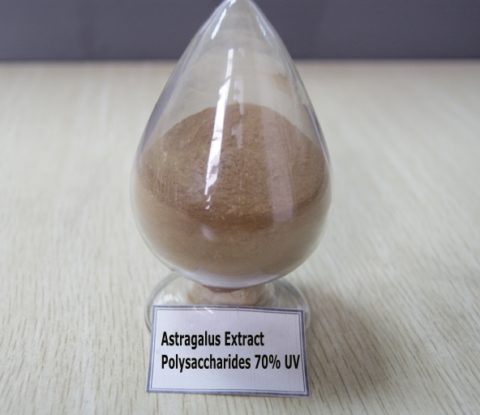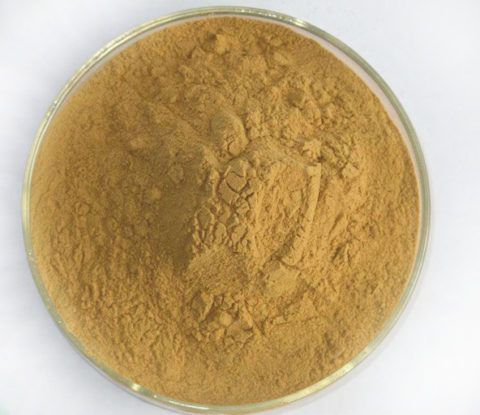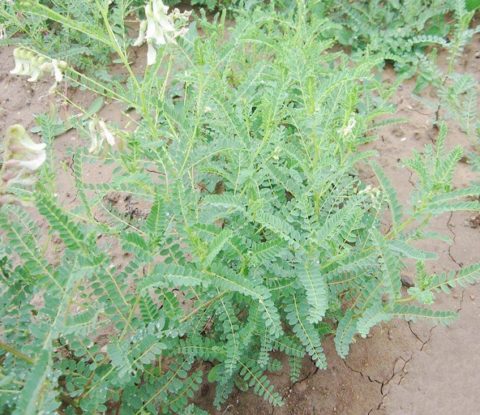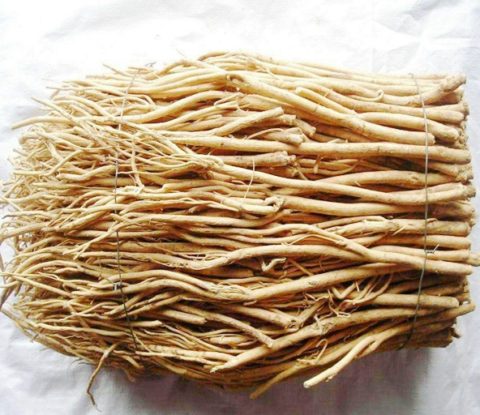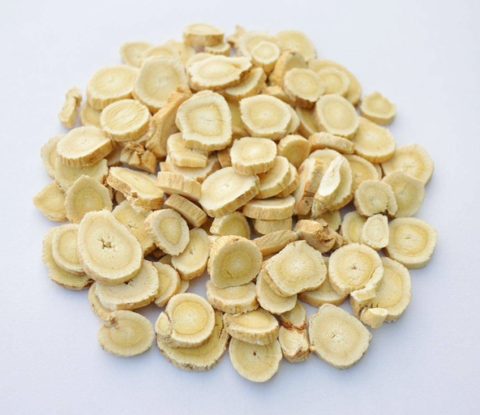
Astragalus Root Extract Powder,Polysaccharides 10%-70% UV; Astragalosides IV1%-10% HPLC; 10:1,20:1 TLC
In Traditional Chinese Medicine, astragalus root is used to invigorate vital energy and strengthen body resistance.
【Latin name】: Astragalus membranaceus(Fisch.)Bge.
【Specifications】: Polysaccharides 10%-70% UV; Astragalosides IV1%-10% HPLC; 10:1,20:1 TLC
【Part used】: Root
【Appearance】: Light yellow to brown-yellow fine powder
【Extraction type】: Water and Ethanol extraction
【Test method】: UV&HPLC&TLC
【Particle size】: 100% pass 80 mesh
【Packing】: 1kg,2kg,5kg/bag (packed in an aluminum foil bag outside; double-layer PE inside); 25kg/fiber drum.
【Physicochemical index】:
Heavy Metal <10ppm(As <1ppm, Pb <2ppm, Hg <0.2ppm);
Pesticides Residues <1ppm;
Total Plate Count <1000cfu/g (Yeast & Mould <100cfu/g, Salmonella: Negative, E.Coli: Negative).
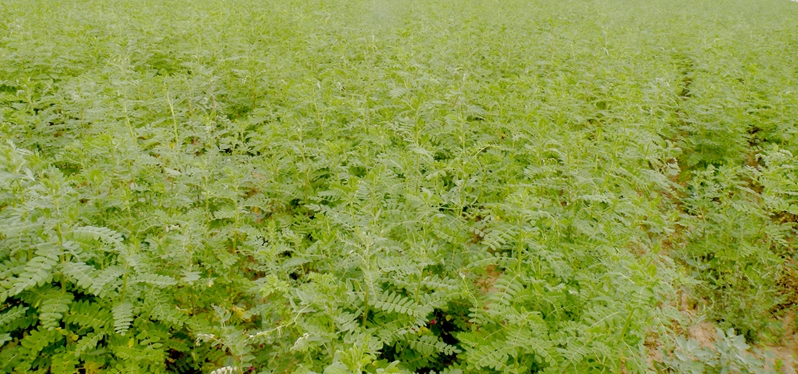
Astragalus extract is using the root of herb Astragalus membranaceus (Latin), and other names include membranous milk-vetch root (English), huang qi (Chinese), ogi (Japanese), and hwanggi (Korean) is one of the important “Qi tonifying” adaptogenic herbs from the Chinese materia medica. The Chinese species Astragalus membranaceus and the related Astragalus membranaceus var mongholicus (synonym: A. mongholicus) are defined in the Pharmacopoeia of the People’s Republic of China as Radix Astragali. It has been prescribed for centuries for general weakness, chronic illnesses, and to increase overall vitality. The genus Astragalus is a very large group of more than 2,000 species distributed worldwide, and is commonly known as milk vetch root. Currently, much of the pharmacological research on Astragalus is focused on its immune-stimulating polysaccharides and other active ingredients useful in treating immune deficiency conditions. Astragalus has demonstrated a wide range of potential therapeutic applications in immunodeficiency syndromes, as an adjunct cancer therapy, and for its adaptogenic effect on the heart and kidneys. Astragalus root has been used to promote immune function and as a tonic to build stamina. Ancient Chinese texts record the use of Astragalus for tonifying the spleen, blood, and qi.
Astragalus root has been used and recorded in Traditional Chinese Medicine for thousands of years. Under the name “Huang-qi “ it was listed in the superior class of three classes of herbs in the 2,000-year-old classic, Shen Nong Ben Cao Jing. The listing of 365 herbs and descriptions attributed to him survives from about 2,000 years ago. Most of the herbs listed in the work are still the most important herbs in Chinese medicine. In another Traditional Chinese book “Shi Shan Yi An” (Medical Case-book of Shi-shan) which is published in 1531, huang-qi(astragalus root) and its use with ginseng, still a well-known Chinese herbal prescription. With ginseng (Panax ginseng) it is used as a tonic for fatigue, general debility, lack of appetite, and spontaneous perspiration. Westerners were quick to realize the importance of this valuable Chinese herb.
In Traditional Chinese Medicine, Astragalus is used to “invigorate vital energy (qi) and strengthen body resistance.” It has been used in prescriptions for shortness of breath, general weakness, and lack of appetite; also as a diuretic, and for the treatment of colds, flu, stomach ulcers, and diabetes. It is still widely used in modern herbal practice in China. It is an official drug in the modern Pharmacopoeia of the People’s Republic of China. In Western herbalism, Astragalus has been described as a diuretic, tonic, pectoral, and antipyretic. The sliced root, whole root, capsulated products, teas, tinctures and other product forms of huang-qi are commonly available in health and natural food stores in North America. Astragalus is becoming one of the better known Chinese herbs used as an immune system stimulant.
Like ginseng, Astragalus is considered an adaptogen. Adaptogens are defined as an innocuous substance that causes minimal disorders of an organism’s function. It must have a “nonspecific action” that normalizes body functions, no matter what the condition or disease. Adaptogens are essentially general tonics. No single compound is responsible for its wide-ranging effects, though polysaccharides are involved in immunostimulant activity. Astragalus is one of a number of herbs used in fu-zheng therapy. Fu-zheng refers to treating disease by enhancing or promoting the host defense mechanism, or normalizing the central energy. In the West, we would classify it as an immunostimulant. This activity is believed to come from polysaccharides, especially astragalan I, II, and III. Other components that may contribute to beneficial effects include saponins and triterpenes.
Chinese research groups in the mid-1970s stimulated scientific interest in Astragalus. They were attempting to verify and pharmacological and clinical basis for the ancient practice of fu-zheng therapy. However, this time they were studying its value in modern medicine. In modern China, three systems of medicine are recognized: 1) modern western medicine; 2) the ancient system of traditional Chinese medicine; 3) a combination of western and traditional Chinese medicine. It is in the context of combined Chinese and western medicine that researchers sought to find answers. Realizing that various agents used in chemotherapy in cancer patients tended to suppress the immune system, making patients more susceptible to secondary disease conditions, the researchers looked at the potential of Astragalus to increase immune function in chemotherapy patients. The fu-zheng therapy research group began its work in 1975. In the 1970s and early 1980s, Chinese scientists published several studies on the use of Astragalus as immune system stimulants for chemotherapy and radiation-treated cancer patients. Astragalus was found to act as non-specific immune system stimulant, and helped to protect adrenal cortical function during radiation or chemotherapy treatment. The Astragalus treatment enhanced the activity of bone marrow, depressed by the chemotherapy and radiation, to produce more white blood cells, the guardians of the immune system, while increasing their ability to “ingest” invading particles (such as bacteria or viruses). The Astragalus treatment also modified gastrointestinal toxicity of patients receiving conventional cancer therapies. The end result was a significant increase in survival rates for the patients receiving fu-zheng therapy as an adjunct to Western medical cancer treatments.
Active Constituents
The main constituents of Astragalus membranaceus include polysaccharides, saponins, flavonoids, amino acids, and trace elements.
Astragalus Extract Polysaccharides
The polysaccharides found in Astragalus have received a great deal of attention, especially the polysaccharide fraction F3. They have been shown to play a role in immunomodulatory actions. Polysaccharides A, B, and C have been identified as glucans, and polysaccharide D as a heteropolysaccharide.
Astragalus Extract Triterpenoid Saponins(Astragalosides)
Astragalus root contains a series of cycloartane triterpene glycosides denoted astragalosides I-VII (saponins), that are based on the aglycone cycloastragenol and contain from one to three sugars attached at the 3-, 6-, and 25-positions.5-8 In the predominant astragalosides I-III, the 3-glucose is acetylated. Several saponins have also been reported that are based on the oleanene skeleton.
Flavonoids
Using high performance liquid chroma-tography-electrospray ionization mass spectrumtry to analyze the flavonoids in the roots of Astragalus membranaceus and Astragalus mongholicus, eight flavonoids were identified,including calycosin-7-O-beta-D-glucoside, calycosin-7-O-beta-D-glucoside-6′-O-malonate, ononin, (6aR,11aR)-3-hydroxy-9,10-dimethoxypterocarpan-3-O-beta-D-glucoside, calycosin, (3R)-7,2′-dihydroxy-3′,4′-dimethoxy-isoflavan-7-O-beta-D-glucoside, formononetin-7-O-beta-D-glucoside-6′-O-malonate,and formononetin.
Other Constituents
Phytosterols, a volatile oil, and amino acids, including gamma-aminobutyric acid (GABA) and L-canavanine, have been isolated from the root. Zinc, iron, copper, magnesium, manganese, calcium, potassium, sodium, cobalt, rubidium, molybdenum, chromium, vanadium, tin, and silver have also been found in the root of Astragalus, as well as traces of tantalum, hafnium, europium, and thorium. Organic compounds identified in the roots include choline, betaine, gluconic acid, and sitosterols, as well as aromatic compounds, essential oil, linoleic acid, aminobutyric acid, bitter compounds, and asparagine.
Indications of astraglus root in TCM
1). Syndrome of spleen-lung qi deficiency
It is a key qi tonic due to its fine action of tonifying spleen and qi. For shortness of breath, fatigue, poor appetite and loose stool due to spleen deficiency, it is combined with qi-tonifying and spleen-invigorating herbs, such as Ren Shen and Bai Zhu. It can treat both the root and branch of sinking of middle qi due to its raising yang qi action. For chronic diarrhea, prolapse of anus and internal organs, it is combined with qi-tonifying and yang-raising herbs. For instance, it is used with Ren Shen, Sheng Ma and Chai Hu in Bu Zhong Yi Qi Tang from Pi Wei Lun. For bleeding syndromes due to spleen deficiency and failure spleen to control blood, or yang exhaustion due to metrorrhagia, blood prostraction caused by sinking of middle qi, it can control blood flowing in vessels through tonifying qi, and it is combined with qi-tonifying, blood-controlling and yang-raising herbs. For instance, it is used with Ren Shen and Bai Zhu in Gui Pi Tang from Ji Sheng Fang, and it is also used with Ren Shen and Sheng Ma in Ju Yuan Jian from Jing Yue Quan Shu. It is also indicated for wasting-thirst due to spleen deficiency and dysfunction of fluid transportation, because it can tonify qi, raise yang and promote fluid transportation, and it is combined with yin-nourishing, fluid-producing and thirst-checking herbs. For instance, it is used with Tian Hua Fen and Ge Gen in Yu Ye Tang from Yi Xue Zhong Zhong Can Xi Lu.
2). Syndrome of spontaneous sweating due to qi deficiency
It is a commonly used herb for deficiency sweating syndrome, because it can tonify qi of lung and spleen, strengthen superficies to check sweating. For insecurity of defensive qi, exterior deficiency and spontaneous sweating due to spleen and lung deficiency, it is combined with sweating-astringing herbs. For instance, it is used with Mu Li and Ma Huang Gen in Huang Qi San from Sheng Ji Zhong Lu. For spontaneous sweating, susceptible to wind pathogen due to superficial deficiency caused by insecurity of defensive qi, it is combined with qi-tonifying, superficial-strengthening and wind-dispersing herbs. For instance, it is used with Bai Zhu and Fang Feng in Yu Ping Feng San from Dan Xi Xin Fa.
3). Blood deficiency syndrome, and syndrome of both qi and blood deficiency
It is indicated for blood deficiency syndrome, and both qi and blood deficiency syndrome, because it can supplement blood through tonifying qi and nourish blood directly. It is used in large dosage and combined with blood tonics. For instance, it is used with Dang Gui in Dang Gui Bu Xue Tang from Nan Shi Mi Cang, or used with other blood tonics.
Modern Researches on Astragalus root
1).Immune Modulation
In mice, oral doses of astragalus extract enhanced several aspects of immunity, including superoxide anion production by peritoneal macrophages, potentiation of phagocytic function, increased thymus weight, and proliferation of splenocytes. Astragalus stimulated NK-cell activity of human peripheral blood lymphocytes and restored steroid inhibited NK-cell activity.
In other studies, astragalus extract polysaccharides were shown to potentiate the immune-mediated antitumo-r activity of interleukin-2 (IL-2) and the activity of monocytes, improve the responses of lymphocytes from normal subjects and cance-r patients, and enhance NK-cell activity of normal subjects and patients with systemic lupuserythematosis (SLE). The polysaccharide fraction F3 potentiated the lymphokine-activated killer (LAK) cell inducing activity of IL-2 in cance-r and AIDS patients.
To investigate the immune regulation of the flavonoids of astragalus extract, monoclonal antibody assays of changes in total T-cell count and subsets were taken before and after treatment in immunosuppressed mice. The LAK cell-inducing activity was also tested simultaneously by isotope technique. Results showed the flavonoids could promote the proliferation of lymphocytes, raise the T-cell count, regulate the T-cell subsets, and elevate LAK cell-inducing activity induced by IL-2. In an open, randomized clinical trial, 115 patients with leukopenia received a high dose of a concentrated Astragalus preparation (equivalent to 30 g Astragalus daily) or a low dose (equivalent to 10 g Astragalus daily) over a period of eight weeks. In both groups there was a significant increase in average white blood cell counts after treatment (p<0.05). On the basis of these findings, the author suggests Astragalus is an effective treatment for leukopenia. Astragalus has also been shown to possess in vitro antibacterial activity against Shigella dysenteriae, Streptococcus hemolyticus, Diplococcus pneumonia, and Staphylococcus aureus.
2).Cardiovascular Disease
The saponins contained in astragalus extract were found to have a positive effect on heart function by inhibiting the formation of lipid peroxides in the myocardium and decreasing blood coagulation. In another study, Astragalus was shown to strengthen left ventricular function and had an antioxidant effect in 43 patients suffering from acute myocardial infarction. After administration of Astragalus, the ratio of pre-ejection period/left ventricular ejection time was decreased, the superoxide dismutase activity of red blood cells was increased, and the lipid peroxidation content of plasma was reduced. Additionally, there was a significant difference between the Astragalus group and the control group in the aforementioned parameters.
Astragalus extract astragaloside IV was isolated from Astragalus membranaceus and injected intravenously in 19 patients with congestive heart failure daily for two weeks. After two weeks, symptoms of chest pain and dyspnea were alleviated in 15 of 19 patients. Additionally, radionuclide ventriculography showed with statistical significance that left ventricular modeling improved, left ventricular end-systolic and end-diastolic volumes diminished, and heart rate slowed from 88 beats/minute to 65 beats/minute. The authors conclude two continuous weeks of injections with Astragaloside could improve left ventricular modeling and ejection function in patients with congestive heart failure. In 92 patients with ischemic heart disease treated with Astragalus, significant relief from angina was achieved, and the effective rate of electrocardiogram improvement was 82.6 percent. In another study of 20 patients with angina pectoris given Astragalus for two weeks, cardiac output was significantly increased and, unlike digitalis, adenosine triphosphatase activity was not inhibited.
